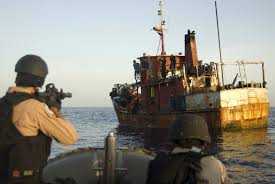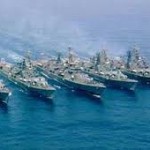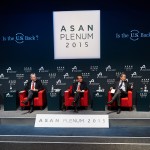
The Future of Sea Lane Security between the Middle East and Southeast Asia
On 23–24 June 2015, the Energy Studies Institute (ESI) of the National University of Singapore and Chatham House organized an event entitled ‘The Future of Sea Lane Security between the Middle East and Southeast Asia’. The roundtable took place at the Grand Copthorne Waterfront Hotel in Singapore.
As countries in Asia become more reliant on energy supplies from the Middle East, the sea lanes that connect these regions are increasingly important. While the United States has been the principal guarantor of security of these routes since 1945, there are real questions as to what role America will play in the future as it develops its own energy resources and as its demand for Middle Eastern energy decreases. Any change could have significant implications for Asian nations, and in particular China, whose demand for Middle Eastern energy is rising swiftly. Understanding how these responses may play out is crucially important for policy-makers. To this end, this event brought together 23 experts, scholars and officials from Europe, Asia and the United States to explore the likely scenarios and their implications for the region. The discussions were held under the Chatham House Rule. The following summary sets out the key points made but does not reflect any consensus among the attendees.
The main points brought up during the discussion were as follows:
The Indian Ocean region (IOR) covers a vast geographic area. The nature of the security threats varies from a mix of interstate conflict, civil war, terrorism and piracy in the Middle East, to piracy and migration in Southeast Asia, to natural disasters across the region.
It is unlikely (though still possible) that the United States will significantly reduce its provision of sea lane security in the IOR over the next 15–20 years, for a number of reasons: the continuing importance of the Middle East as a global supplier of oil and gas; the commitment of the United States to a number of conflicts in the Middle East; America’s substantial economic engagement in the Middle East, India and Southeast Asia; and the perception that sea power and control of choke points is indispensable for US hegemony.
US policy-makers largely view the IOR today in the context of threats emanating from the Gulf region, and the region’s future in terms of the implications for strategic competition with China. However, this point of view is not shared in the IOR itself.
The IOR’s sea lanes are of varying levels of strategic importance to states in the region. Even though the United States is rapidly decreasing its dependence on Middle Eastern oil, some of its major allies—including Japan, South Korea and Australia—are highly dependent upon the security of sea lanes for energy imports (and other commercial trade). India attaches particular importance to sea lane security in the IOR as it is almost entirely dependent on what are termed ‘sea lines of communication’ (SLOCs) for its international trade.
For the moment, institutions and states in the IOR are largely not up to the task of managing the sea lanes themselves, both in terms of capabilities and will to act.
There is doubt over US commitment to the IOR, in particular over the extent to which it will act to guarantee freedom of navigation, because it has acted inconsistently in the past. Many regional actors are suspicious of China and do not believe the country’s assertions that its intentions are peaceful.
Both in this region and in the maritime domain more broadly, states remain the most important actors by a considerable margin, with transnational groupings a distant second. Non-state actors are generally seen as less important at a regional level, since they are either too weak to do more than engage in sporadic disruptive activity (pirates and terrorists fall into this category) or else play by the rules laid down by states (as is the case with multinational corporations). Nevertheless, illegal groups are able to exert control over littorals where local states are weak.
While roundtable participants largely viewed a major war between the United States and China as unlikely, they more readily envisaged scenarios of limited conflict or increased competition. Nonetheless, the current security arrangement was widely seen as durable.
To read the full meeting report, click here:






